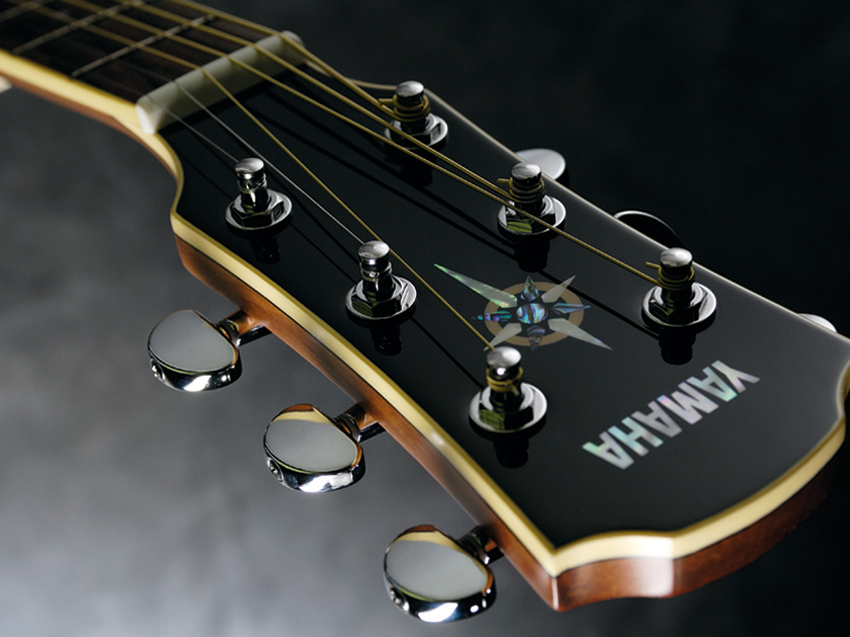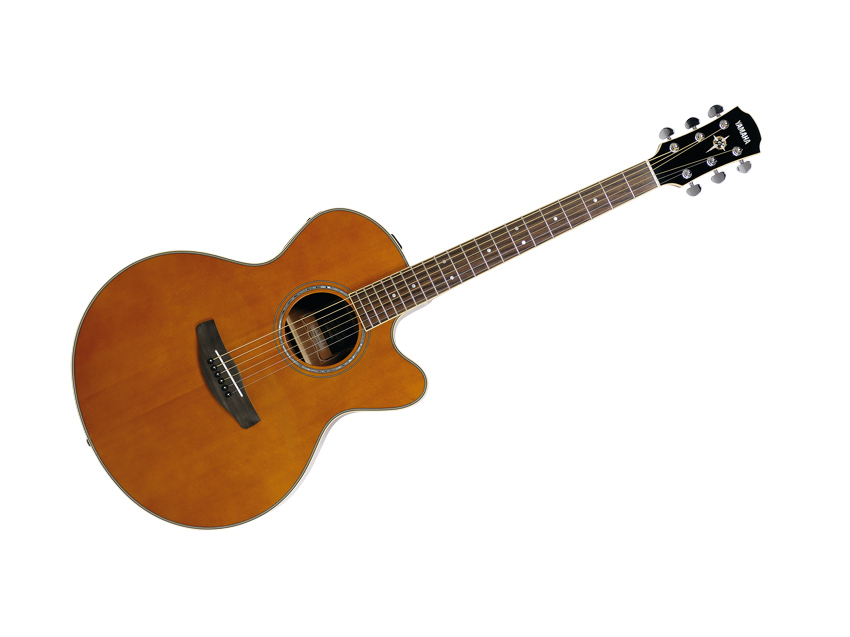MusicRadar Verdict
This handsome mini-jumbo ticks nearly all the right boxes.
Pros
- +
Looks. Neck. General Competence.
Cons
- -
Getting the best out of ART needs a little work. Non-muting tuner.
MusicRadar's got your back

Yamaha CPX700II

Yamaha CPX700II

Yamaha CPX700II
Yamaha's Compass Series CPXs, first unveiled in 1999, have undergone periodical revamps over the years. The CPX700II looks set to keep the standard high.
The new 700II replaces its un-suffixed predecessor, with the replacement of the PP3 9V battery with two 1.5V AAs.
"Thanks again to an excellent set-up, the grip is enjoyably slick."
Within the circuitry, Yamaha has somehow managed to boost the batteries' voltage to 11V to give, it says, a wider dynamic range, more stable operation and reduced distortion, even when the batteries are running low. In short, the claim is better tone for longer: no bad thing at all.
Presumably a spin-off benefit is that rechargeables can be used - as long as they're alkaline - so you won't need to keep forking out for batteries. The 700II continues to employ the one-way ART system with a contact sensor under either side of the bridge.
The preamps retains its predecessors' facilities of a three-band EQ and wide-range mid contour, but the control panels have been physically redesigned and the EQ is said to have been "reviewed for optimum sound and balance".
The auto-chromatic tuner, with a new, clearer display, is apparently now more accurate (though we don't recall a problem with the old ones), but still doesn't mute the output when engaged. For discreet mid-performance tuning tweaks this is a significant omission.
As for cosmetics - extended colour choice aside - the main changes are a translucent headstock and truss rod access via the soundhole. Yamaha has replaced the raised soundhole ring with rosewood/mahogany inlaid rosettes.
Build
This 15.75-inch wide, nato-backed cutaway mini-jumbo, with a solid not laminated spruce top, shows off a new colour - tint - which means a top stained to a medium-hued browny-amber that looks stylishly striking without being garish.
The back and sides are left natural while the cream-bound body is glossed to a high standard and carries a simple abalone-inlaid rosette and discreet clear scratchplate.
The fingerboard has body-matching binding, this time continuing around the headstock, which bears the series-identifying compass motif.
The CPX's full-scale nato neck is satin and a shallower affair, kicking off at just over 20mm, deepening quite gently further up and fashioned to a conventional 'C' profile.
Thanks again to an excellent set-up, the grip is enjoyably slick, while string spacings are the typical Yamaha dimensions of 43mm at the nut and 53mm over the bridge. Some of us would undoubtedly prefer it if the latter was a shade airier, but the arrangement is pretty amenable to picking techniques nevertheless.
Sounds
Acoustically, CPXs aren't necessarily the punchiest small jumbos around, and this one's a touch light on low-end grunt and richness for its size.
But their biggest asset is a precisely balanced timbre, accompanied by a sustaining, resonant follow-through. The CPX700II ably fulfils this brief.
Fired up, an important benefit of the ART's sensors is an inherently well-balanced output across the strings, and this one's bang-on. The one caveat, though not as noticeable as on earlier, similar ARTs this reviewer has tried, is that the system needs careful EQ'ing to disguise what seems to be an intrinsic hint of nasality in the upper-mids and a little hardness in the highs.
Fortunately, this is where the flexible preamp proves its worth. It's not necessarily just a case of reining back the treble and mid bands on their own, but rather tinkering with the contour settings - whose range goes well into the treble zone - so that these less desirable traits are minimised. Once achieved, the EQ can then be fine-tuned in a positive and creative manner.
Looking great in its tint-finish option, it's an easy-handling general-purpose electro and, with some user familiarisation, its ART system can do a fine job.
Now hear the Yamaha CPX700II in action...
“A synthesizer that is both easy to use and fun to play whilst maintaining a decent degree of programming depth and flexibility”: PWM Mantis review
“I feel like that song had everything we needed to come back with”: Bring Me The Horizon’s Lee Malia on Shadow Moses, its riff and the secrets behind its tone, and why it was the right anthem at the right time
“I said, ‘Are we sure we can write a song about death?’”: The story of Mike + The Mechanics' classic No.1 The Living Years









